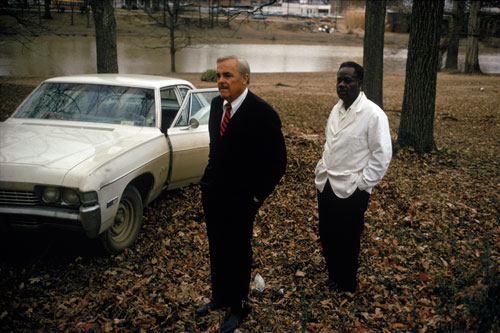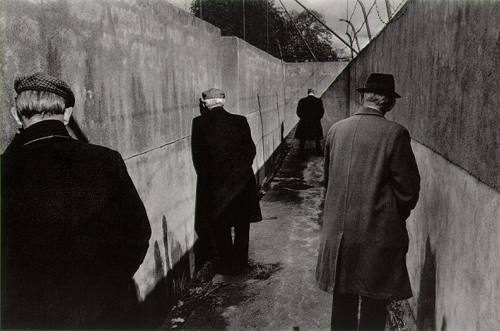Josef Koudelka (also compared to William Eggleston)
“The maximum, that is what has always interested me.” – Joseph Koudelka
You’d think this quote is a tad hyperbolic, but I think it’s not so full of trope and more honest than one would presume coming from Koudelka. I was looking at two of his books today. Initially, I was struck by really nice prints (done primarily by Vojin Mitrovic at Picto labs in Paris), but then I just kept getting sucked deeper and deeper into Koudelka’s work. Maybe I was prone to profundity this afternoon, but I saw a great capacity for intelligence and vision that functions by transcending the everyday in his images.
Many of his picture’s – the less overtly photojournalistic ones mostly – rhythm and composition, brought to mind the sensibility Eggleston purported

photo: Adyn and Jasper, by William Eggleston. © 2005 Eggleston Artist Trust
Though the comparison of Eggleston and Koudelka doesn’t go much further than that except for their dedication to the more panoramic of formats, 2:1 for Eggleston, 3:1 for Koudelka later in his career. I say the comparison falls off b/c I think Eggleston’s images tend to point you in a direction, suggesting what you’re to think or just being more implicit with their sense of irony. Maybe this is a function of the color, I don’t know? Koudelka, on the other hand, you sink into his images all the same, but they don’t guide you at all, more like they spin you around and then let you figure out for yourself where you are and what’s going on. What I’m referring to comes from a subtle sense of abstraction that is present in a lot of his work. His images of the wrist-hand-watch in the center of totally unrelated scene is a perfect example of how his work is good… Unfortunately, more of the work I’m referring to is his later panoramic images that are harder to come by, but if you can find a book of his you’ll see what I’m talking about.

photo: Czeckoslovikia 1968. © Joseph Koudelka

photo: Ireland 1972. © Joseph Koudelka

photo: Ireland 1976. © Joseph Koudelka

photo: Spain 1971. © Joseph Koudelka
Update: I guess it turns out, after talking with someone in regards to this post, that I just missed Koudelka speaking here in NYC early this April at the Aperture Gallery in Chelsea, moderated by photo critic Vicki Goldberg. I’m happy to say thanks to the internet I did find this mp3 recording of the talk courtesy of Max Pasion, which I’ll also stream here.
[audio:koudelka_talk.mp3]
Joseph Koudelka speaking at Aperture Gallery in New York City. April, 2007. Moderated by Vick Goldberg.
Update 2: some of those panoramas I was talking about from Koudelka’s book The Black Triangle. Hopefully it’ll make my Eggleston comment a bit more sane:

photo: From the book, The Black Triangle. © Joseph Koudelka

photo: From the book, The Black Triangle. © Joseph Koudelka
reat write up of a wonderful photographer. I recently found out about Koudelka when I went to MoMA and several of his Gypsy and Invasion ’68 photos were featured.